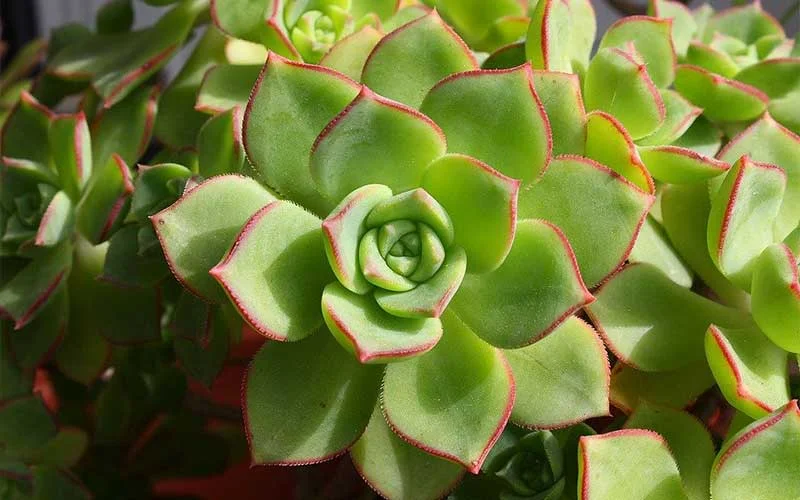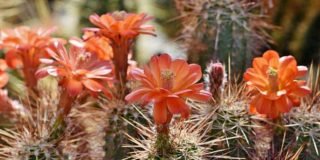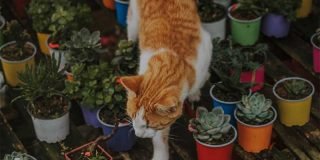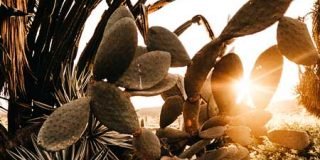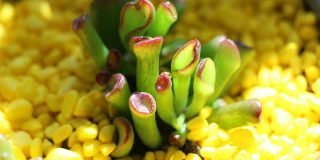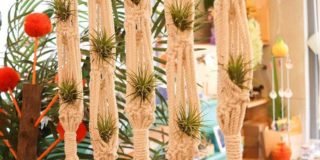Contents
Since they can be found almost anywhere, then people are now more interested in knowing more about Echeverias. Here, we will provide you a guideline on how to grow an Echeveria as well as its other characteristics.
What Is an Echeveria?
Let’s start by identifying what is an Echeveria? Echeveria succulents are considered as part of the Crassulaceae family. They are a native plant of Mexico, Central America, and South America. Echeveria plants have thick leaves that surround the middle stalk forming into rosettes. These large and chunky leaves act as the water storage of the plant. This can help the plant in adjusting to various climates.
Echeveria succulent plants come in a wide range of sizes, shapes, and colors. Most often, red or purple shades can be found on the ends of their leaves. But usually, they are in blue-green or dark green color.
Most of the Echeveria species of Central Mexico are recorded by Atanasio Echeverria y Godoy, an 18th-century botanical artist from Mexico.
How Big Can an Echeveria Grow?
Is Echeveria Best for Indoors Or Outdoors?
Echeveria succulents can look amazing when used as covering plants for rock gardens. However, if you plant them outdoors, keep in mind that it needs moderate temperatures throughout the year. Echeverias are particularly very sensitive to cold temperatures as well as to an abrupt change in temperature.
But if you are living in a location where the winters can get real, then you can still get a chance to grow these gorgeous succulents. You can grow them on pots and move them indoors when it gets extremely cold during the winter.
However, one of the major concerns of Echeveria growers is the fact that just like most succulents, Echeveria also requires some sunlight as they do outside. The best thing to do is to consider the temperature and the lighting when choosing the best place to grow your Echeveria succulents.

How to Grow Echeveria Indoors?
Give Your Echeverias The Best Sunlight!
But during the summertime, you must protect them against the hot afternoon sun. When Echeverias are exposed to strong sunlight, then the tendency is they will get scorched and damaged perpetually. Also, the constant change in the amount of sunlight can be stressful for your Echeverias. If you are planning to transfer them from outdoors to indoors, then you have to do it progressively.
If you are keeping them indoors, then you have to place them near the window so that it can get the best sunlight. If possible, make sure that it is facing to the South so that it can get much sunlight most especially during winter.
How to Water Your Echeverias?
After watering your Echeveria, wait until the plant has used all the water that is stored in their body. To know if your Echeveria requires watering again, you have to check if the soil is entirely dry and the leaves already look crumpled.
What Is the Proper Soil Type for Succulents?
Using specially mixed succulent soil can provide excellent drainage to your succulent, keeping the roots dry at all times. Be sure to use this type of soil for your Echeveria. Succulent soils are comprised of coarse sand or perlite to keep your plant well-drained. You could also choose to prepare your succulent soil mixture.

What Is the Perfect Pot for Echeverias?
Clay or ceramic planters with broad drainage holes are perfect for your Echeverias. This is the best way of keeping the roots of your plant dry and breathable.
Do You Need Fertilizers for Your Echeverias?
At the start of the spring, give them a slow-release fertilizer. Never over-fertilize them since this can cause them to burn.
How to Propagate Echeveria?
Propagating Echeveria from seeds might take some time and requires a lot of effort too. It is not easy but can be possible. If you want an easy way of propagating them, then you can grow them from cuttings or leaves. Also, they can grow lots of offsets too, so you don’t have to bother propagating them. Once your Echeveria generates offsets, cut them with a scissor or a knife. Place them on a dry surface for several days. Then, you can plant them in the soil so it can grow roots and eventually grow into a new plant.
Can Echeveria Bloom?
Most types of Echeveria can blossom at the end of summer. However, there are unique types that can bloom in other months, such as in November. Some people are wondering why Echeverias die after they blossom. However, this is just a myth about Sempervivums. Although, it is a fact that Sempervivums and Echeverias belong to the same family Echeverias blossoms yearly while Sempervivums will perish right after they bloom.
How to Care for Echeverias Inside Your House with Pets?
What Are the Best Echeveria Types?
Echeveria Laui
This is one of the most beautiful Echeveria species since it can produce marvelous pink flowers and has blue-green matte leaves. Although its rosettes can develop gradually it can reach a width of 12 centimeters and a height of 15 centimeters.
Echeveria Agavoides
These are the small species of Echeverias. They don’t have any stem and they can grow into a star shape. They have pointed leaves that can expand up to 12 centimeters. Every summer, they can boom slim pink-red flowers.
Echeveria Elegans
This type of Echeveria is also referred to as the “Mexican Hens and Chicks.” They are considered as one of the most typical types of succulents. The Echeveria Elegans succulent is very easy to grow and propagate using its offsets.
Echeveria Peacockii
A fast-growing Echeveria succulent that is comprised of blue-green leaves with red edges. Echeveria Peacockii can produce orange-pink flowers that can reach up to 25 centimeters.
Echeveria Lilacina
A well-known Echeveria succulent that is also referred to as the Ghost Echeveria. They come in a gorgeous color of lilac. Orange proportioned rosette blooms can be seen on this plant.
Echeveria Setosa
The Echeveria Setosa is an extraordinary type of Echeveria since its leaves are shrouded with small white hairs. They are short, broad and does not have a stem.
Conclusion
We hope these details about Echeveria can inspire you to grow your own. If you have not experienced growing succulents yet, then we can help you. Eden Succulents has a variety of guidelines that you can use in growing your plants. If you need further help, then just send us your message on the comments below.
Succulent Fertilizer
- Plants will arrive in individual or group gift packaging with cushioning.
- Fully rooted living succulent plant in a plastic growers pot with soil. Available in 2 and 4 inch standard growers planters.

